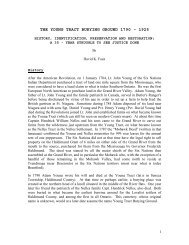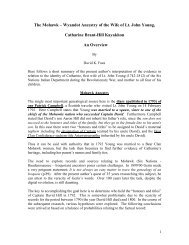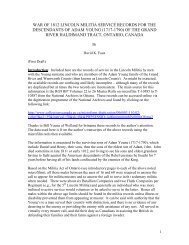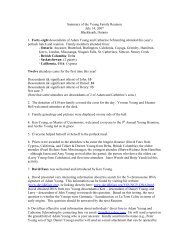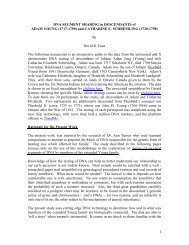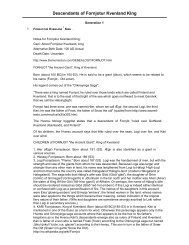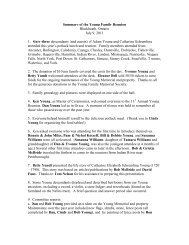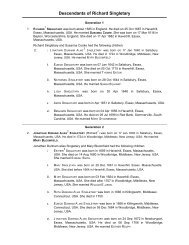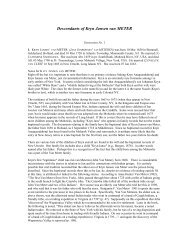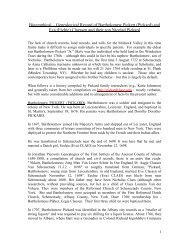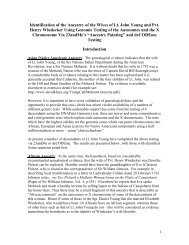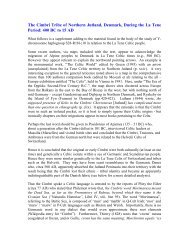Part 2 - Davidkfaux.org
Part 2 - Davidkfaux.org
Part 2 - Davidkfaux.org
Create successful ePaper yourself
Turn your PDF publications into a flip-book with our unique Google optimized e-Paper software.
NORWAY and SWEDEN: The possible movement of La Tene peoples into NorthernScandinavia is not noted by the very few references to this area by Classical writers as itwas beyond their scope of awareness and reliable information sources. However, it isproposed here that the La Tene influence was indirect, via the Celtic Cimbri ofHimmerland and Vendesyssel in Northern Jutland, Denmark. It is difficult to knowprecisely when a migration to the north may have occurred, but if Northern Jutland wassettled by the Cimbri about 400 BC, then, since it appears that overpopulation was anissue in the years leading up to the migrations of circa 120 BC, it is expected that thenearby lands to the north received some spill over of the excess population. There havebeen stong historical connections between Jutland and the Vestfold (Vik) area ofNorway, and Halland and Skane in Sweden, plus the area adjoining southern Norway.For much of the early historical period, before Norway became a separate state, theseareas were effectively a part of Denmark.Therefore, the R-U152 in for example Southern Norway can be tentatively attributed tothe Cimbri (La Tene Celtic). It could also be due to immigration such as Waloons(Belgians) brought to this region in the 1600s. Only further research can tease out thefacts here.R-M269 percentages - R-M269 is typically about 25% of the haplogroups in mostNorwegian and Swedish samples.R-U152 predictions – Since the Oslofjord area, including Vestfold, is immediately to thenorth of the Jutland Peninsula, it is predicted that of the 25% R-M269, R-U152 will befound primarily in this area with a decreasing frequency away from this nucleus, althougha cluster in Hordaland may be found thanks to a migration of the Charudes. Similarly,the highest concentration in Sweden should be Halland and other areas adjoiningNorway, based strictly on proximity factors.R-U152 findings - An academic study of a sample of Norwegians found that over 60% ofthe R-M269 was R-U106. While R-U152 comprised around 20% of the sample, all werelocated in Southeast Norway (in other words Vestfold and adjacent areas) – hence thereappears to be a concentration here. Comparing this data with that for Orkney, it appearsthat the R-U152 in the latter location is a function of migration from the area aroundOslofjord and adjacent areas. To date one Norwegian from the head of Oslofjord; andtwo Swedes both from the eastern side of Oslofjord and Halland have tested R-U152DENMARK: The historical and archaeological data point to La Tene Celtic migrationsto the northern part of the Jutland Peninsula beginning about 400 BC when they likelyarrived and by 325 BC, according to Philemon, named the Baltic Sea in their P-Celt(likely Gaulish) language, the “Morimarusa” (dead sea) and the more northerly reachesbecame known as the “Cronium” sea (frozen). Further influxes occurred in 279 BC and101 BC. Archaeological data provide some interesting prospects. For example, theMindelheim sword type is dated to Hallstatt C (later 8 th , early 7 th Centuries). This style isfound in Hallstatt and across the Hallstatt cultural region almost exclusively – howeverwith a major outlier centered in Jutland and the adjacent Danish Islands. This region,23



